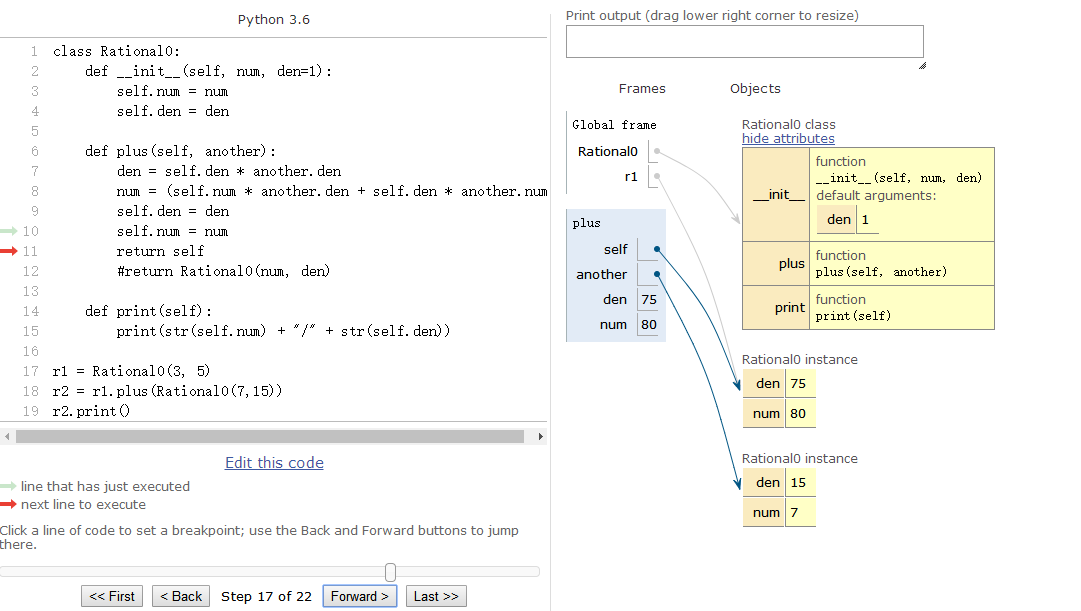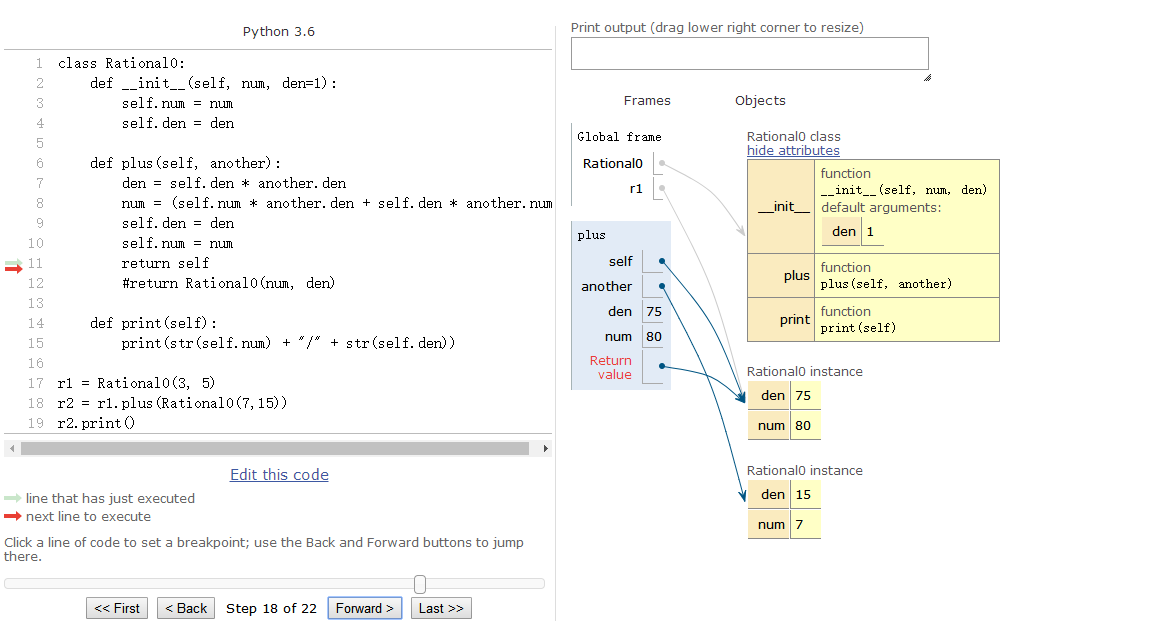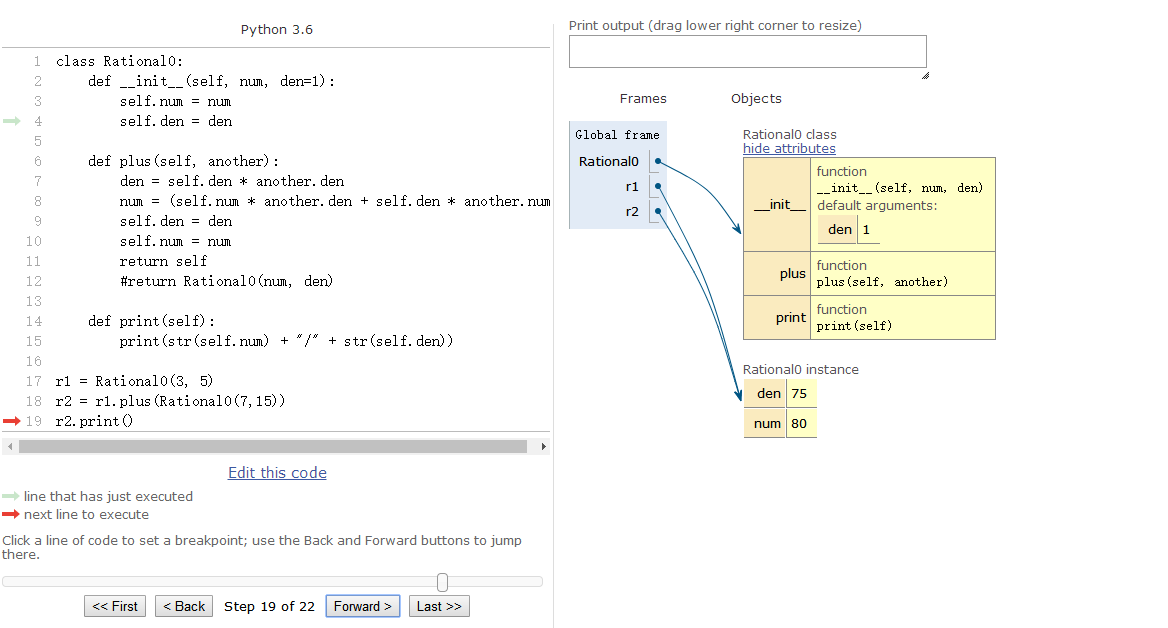目的:设计一个有理数相加。如3/5 + 7/15 = 80/75
return self
输入:
class Rational0:
def __init__(self, num, den=1):
self.num = num
self.den = den
def plus(self, another):
den = self.den * another.den
num = (self.num * another.den + self.den * another.num)
return self
def print(self):
print(str(self.num) + "/" + str(self.den))
输出:
>>> r1 = Rational0(3, 5)
>>> r1.print()
3/5
>>> r1
<__main__.Rational0 object at 0x000001D1D91A5F60>
>>> r2 = r1.plus(Rational0(7,15)) # 新对象r2
>>> r2
<__main__.Rational0 object at 0x000001D1D91A5F60> # 地址相同
>>> r1.plus(Rational0(7,15)).print() #或者r2.print()
3/5
>>> r2.num
3
>>> r2.den
5
从地址中可以看出Rational0(3, 5)和r1.plus(Rational0(7,15))返回的对象是同一个r1地址,原因在于return self。
return self做出修改
class Rational0:
def __init__(self, num, den=1):
self.num = num
self.den = den
def plus(self, another):
den = self.den * another.den
num = (self.num * another.den + self.den * another.num)
self.den = den
self.num = num
return self
#return Rational0(num, den)
def print(self):
print(str(self.num) + "/" + str(self.den))
r1 = Rational0(3, 5)
r2 = r1.plus(Rational0(7,15))
r2.print()
输出:
>>> r1 = Rational0(3, 5)
>>> r1.print()
3/5
>>> r1
<__main__.Rational0 object at 0x00000239CADF5E80>
>>> r2 = r1.plus(Rational0(7,15))
>>> r2.print()
80/75
>>> r2
<__main__.Rational0 object at 0x00000239CADF5E80>
>>> r2.num
80
>>> r2.den
75
分析:



return新的对象
输入:
class Rational0:
def __init__(self, num, den=1):
self.num = num
self.den = den
def plus(self, another):
den = self.den * another.den
num = (self.num * another.den + self.den * another.num)
return Rational0(num, den)
def print(self):
print(str(self.num) + "/" + str(self.den))
输出:
>>> r1 = Rational0(3, 5)
>>> r1.print()
3/5
>>> r1
<__main__.Rational0 object at 0x000001F857C35DD8>
>>> r2 = r1.plus(Rational0(7,15)) # 新对象r2
<__main__.Rational0 object at 0x000001F857C48940> #地址不同
>>>r2.print()
80/75
>>> r2.num
80
>>> r2.den
75
从地址中可以看出Rational0(3, 5)和r1.plus(Rational0(7,15))返回的对象不是同一个,原因在于return Rational0(num, den)。